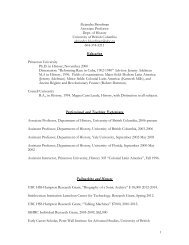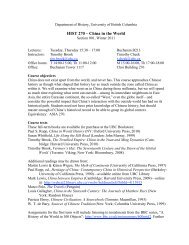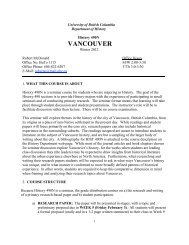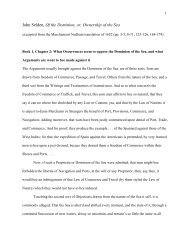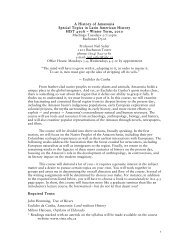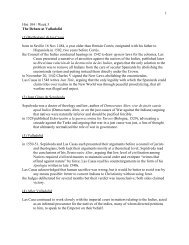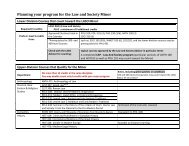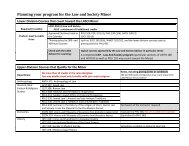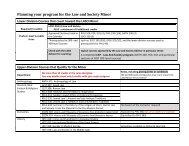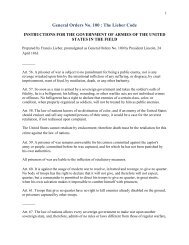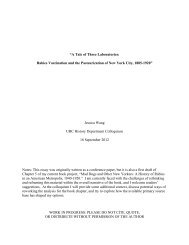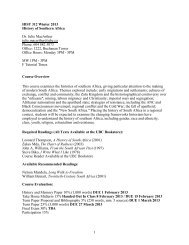Orientalizing the Pacific Rim: - History, Department of
Orientalizing the Pacific Rim: - History, Department of
Orientalizing the Pacific Rim: - History, Department of
Create successful ePaper yourself
Turn your PDF publications into a flip-book with our unique Google optimized e-Paper software.
Movement, Migration and Orientalism<br />
At <strong>the</strong> Institute <strong>of</strong> <strong>Pacific</strong> Relations' first meeting in Hawaii, Roderick McKenzie<br />
presented his initial findings from research conducted during <strong>the</strong> Survey <strong>of</strong> Race<br />
Relations. As he continued to study "Orientals" in <strong>the</strong> United States in <strong>the</strong> next few<br />
years, he produced a series <strong>of</strong> papers which indicated that <strong>the</strong> sociologists were ready<br />
to talk about more than just <strong>the</strong> place <strong>of</strong> Asians in America; <strong>the</strong>y were ready to define<br />
<strong>the</strong> relationship <strong>of</strong> 'Orientals' and 'Occidentals' worldwide.<br />
Roderick McKenzie was enamoured <strong>of</strong> <strong>the</strong> modern world and its capacity for<br />
migration and contact. “Life differs from death in <strong>the</strong> matter <strong>of</strong> movement,”<br />
McKenzie wrote, “And <strong>the</strong> scope <strong>of</strong> life is defined by <strong>the</strong> facilities used for overcoming<br />
distance.” 45 Movement and change were <strong>the</strong> great constants in his study <strong>of</strong> sociology,<br />
in particular <strong>the</strong>ir expression in space: <strong>the</strong> history <strong>of</strong> a location had to be tied to its<br />
changing spatial relations with o<strong>the</strong>r places. McKenzie might look at <strong>the</strong> history <strong>of</strong> a<br />
city, for instance, by considering how <strong>the</strong> ‘time-distance’ <strong>of</strong> transportation<br />
technologies connecting it to o<strong>the</strong>r cities had changed. Seattle may have been eighty<br />
days away from Hong Kong by clipper in 1849, but only twenty-one days by steamer<br />
in 1880. This might be contrasted with <strong>the</strong> fact that at <strong>the</strong> same times, Seattle had been<br />
nearly one-hundred-twenty days by wagon train away from <strong>the</strong> East Coast in 1849 and<br />
fourteen by train in 1880. McKenzie elaborated his conceptions <strong>of</strong> <strong>the</strong> global<br />
interconnections between places and regions in a series <strong>of</strong> articles dealing with ‘spatial<br />
distance,’ and his great accomplishment was to outline <strong>the</strong> dynamic relationship<br />
between structural relationships and change brought about by movement and<br />
45 From “Movement and <strong>the</strong> Ability to Live,” Proceedings <strong>of</strong> Institute <strong>of</strong> International<br />
Relations, 1926. Reprinted in Roderick McKenzie, On Human Ecology: Selected Writings,<br />
edited by Amos Hawley (Chicago: University <strong>of</strong> Chicago Press, 1968), 134.<br />
32



